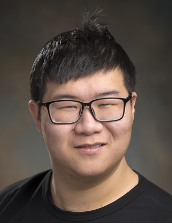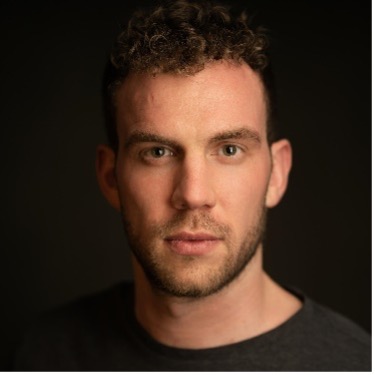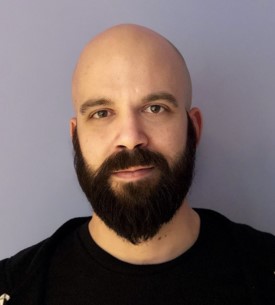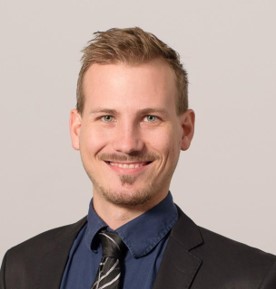Eurographics Annual Award for Best PhD Thesis
The current call will close on 14th January, 2025. Eligibility includes a PhD Thesis defended and mainly conducted in Europe or in countries having a Eurographics Chapter or in EG Organizational Member Institutions (https://www.eg.org/wp/local-chapters/). Theses defended and awarded the degree from May 1st, 2023 to October 31st, 2024 are eligible in this edition. The award committee will take both the quality of the research conducted and the scholarliness of the submitted thesis into consideration. The required documentation includes:
- The submission must include a link to the Thesis (in English) pdf in the Eurographics Digital Library, Graphics Dissertation Online. Nominations must refer to Thesis documents being publicly available at Graphics Dissertation Online. Forms and procedures for submission of the thesis for archiving in the Eurographics Digital Library are available at https://diglib.eg.org/handle/10.2312/8107.
- Full CV of the candidate with explicit mention of which publications resulted from the thesis, and duration of the thesis. Also, please identify up to top three first-authored papers.
- Please upload your submission via the SRM system at https://srmv2.eg.org/COMFy/Conference/EG_PHD_2025
- Checklist for submission: full cv, list of up to top three first-authored papers, link to thesis (diglib link), and any relevant supporting document — all uploaded via SRM.
The documentation of candidate nominations must be uploaded via the SRM system (see #3 above) and please notify the PhD Thesis Awards chair, Marco Attene, at eurographics-phd-award@eg.org, not later than 14/01/2025. Submissions can be sent by the candidate, the supervisor, or any other researcher. If you do not receive an acknowledgment within a week, please contact Marco again. All submitted material should be in English. Every Thesis can be submitted only once.
In 2011, Eurographics extended the Research Awards Programme by creating an additional Best PhD Thesis Award. The aim is to recognize good thesis work in Europe, to incentivize young researchers, and to offer them the opportunity to publish the state of the art section of their thesis as a STAR in the Computer Graphics Forum Journal. Eurographics annually grants three PhD thesis awards. They are jointly sponsored by Eurographics and the Computer Graphics Forum Journal.
The PhD Thesis Awards Committee consists of five members. Committee membership will be for three years terms, which will be staggered to ensure continuity. The committee can decide, as an extraordinary measure, to increase the number of awards in some years. The Committee will consider the quality of the work, the review reports, the quality and impact of the publications derived from the thesis, the coherence of the state of the art section in the thesis and any other relevant aspect of the work.
Awarded researchers will be announced and receive a certificate at the opening session of the Annual Eurographics Conference (where they will profit from a free registration). They will also receive a three-years free Eurographics membership (To register please join at https://services.eg.org/EG/Account/Join, choose 3 years and bank transfer and send an email to eg-support@eg.org.), and will be invited to prepare a State-of-the-Art paper within two months after the Conference. Submitted papers will follow a fast track review cycle for publication in the STAR section of the Computer Graphics Forum Journal.
The nomination term is now open, see the Call for Candidates above.
Recipients of the Award
2024

In his Ph.D. thesis, Christian Hafner made significant contributions to parametric design in fabrication-aware shape optimization. He studied how curved shapes can be obtained by deforming elastic rods and proposed innovative methods and algorithms. His techniques are implemented in a software that can generate rods interactively for fast prototyping. In addition, he worked on shape optimization for parametric CAD geometries, where he used XFEM, combined with novel integration techniques, to generate a differential simulator with respect to the CAD parameters.
His work enables the solution of a wide range of computational design problems directly on a CAD representation, and makes it straightforward to turn an existing FEM implementation into one that supports strong discontinuities in cut elements.
Eurographics is pleased to present the Eurographics 2024 PhD Award to Christian Hafner.

In his PhD thesis, Zhiqin Chen significantly advanced our knowledge in the area of neural reconstruction of meshes. His main achievement was to upgrade classic Computer Graphics methods, such as BSP trees, Marching Cubes or Dual Contouring to the “neural age”, that is, to make them differentiable. He also introduced a new NeRF representation based on textured polygons that can be rendered using the rasterization pipeline at interactive rates even on mobile devices.
His work offers a striking synthesis: Deep analytic understanding from first principles as well as innovative algorithmic ideas from Graphics; systematic large-scale evaluation plus reproducibility predominantly found in Computer Vision. His papers offer fundamental building blocks used by many others and hence have already received awards at CVPR and are highly cited.
Eurographics is pleased to present the Eurographics 2024 PhD Award to Zhiqin Chen.

In his Ph.D. thesis, Philipp Henzler explored novel approaches to tackle the challenge of inferring shape and appearance from natural images. His work provides original ideas on reducing the need for supervision when training high-dimensional models that encode 3D shapes and their material properties. A central strategy employed is viewing tasks as inverse rendering problems, carefully formulated as machine learning processes via suitably designed differentiable rendering components. This effectively incorporates physical priors, enabling efficient learning from unannotated data as well as yielding explicit representations that are interpretable and editable.
Overall, his work has contributed to shaping the field of self-supervised neural reconstruction from images, image collections, and videos, providing inspiration for further advancement towards the goal of full 3D scene understanding.
Eurographics is pleased to present the Eurographics 2024 PhD Award to Philipp Henzler.
Honorable Mentions
Further, in 2024, two honorable mentions were awarded to Chenxi Liu and Fangchen Zhong, respectively.
2023

In his PhD thesis, Gaspard Zoss made significant contributions towards solving the problem of facial performance retargeting. His work draws extensively on empirical data, and provides methods carefully designed to facilitate current professional workflows.
His thesis has been instrumental in advancing the modeling and acquisition of jaw motion, the removal and synthesis of secondary dynamic effects present in facial performance capture, and data-driven re-aging.
His focus on practical solutions, developed with attention to production pipelines, stands to benefit not only the scientific community, but also the entertainment industry.
Eurographics is pleased to present the Eurographics 2023 PhD Award to Gaspard Zoss.

In his PhD thesis, Georg Sperl explored the use of physical laws governing yarns to model the elasticity of knitted cloth. Georg Sperl proposed an original approach based on simulation of fabrics at the scale of periodic yarn patterns, approximating the mechanical response of real samples from the textile industry. Georg Sperl’s thesis represents an important step toward the real-time simulation of the dynamics of thousands of yarn meshes in real time. A key contribution has been to consider each yarn and its physics, instead of meshes that only reproduce the overall properties of the material, while maintaining a reasonable computational cost. The thesis has the potential to benefit the textile industry in designing new fabrics.
Eurographics is pleased to present the Eurographics 2023 PhD Award to Georg Sperl.

In his PhD thesis, Hsueh-Ti Derek Liu pioneered the use of data-driven approaches for geometric stylization and acceleration. Hsueh-Ti Derek Liu introduced a generic data-driven stylization method based on three ways to characterize the style of geometry: style of rendering, difference between a shape and its simplified counterpart, and similarity of surface normals.
Hsueh-Ti Derek Liu’s thesis also represents an important step towards scalable geometry processing. Key contributions have been to study coarsening algorithms that preserve spectral properties and novel multigrid methods that operate on unstructured curved meshes. The thesis summarizes a coherent activity that goes from shape editing to surface multigrid methods through stylization and shape analogies.
Eurographics is pleased to present the Eurographics 2023 PhD Award to Hsueh-Ti Derek Liu.

In her PhD thesis, Yifan Wang explored the use of deep learning techniques to distill user expertise in geometry processing algorithms. Yifan Wang’s contributions are especially important in applications where geometric details must be preserved or reconstructed starting from incomplete and/or distorted input. Dealing with such challenging data often requires human intervention to compensate for missing or imprecise information. Yifan Wang’s thesis demonstrates that deep learning can effectively minimize this need, and sometimes eliminate it at all, thus representing a significant advancement in practical geometry processing.
Eurographics is pleased to present the Eurographics 2023 PhD Award to Yifan Wang.
2022

In his PhD thesis, Julien Philip pioneered the use of Multi-view Image Editing and Rendering to allow casually captured scenes to be rendered with content alterations such as object removal, re-lighting, or scene composition. Julien Philip exploited an original approach based on optimization techniques and modern deep-learning to take advantage of all the information present in multi-view content while handling specific constraints such as multi-view coherency.
Julien Philip’s thesis represents an important step toward the combination of the flexibility of traditional computer graphics and the ease of capturing assets with images. A key contribution has been to analyze unstructured sets of pictures of real-world environments and obtain a proxy geometry of the scenes using multi-view stereo. The thesis summarizes a coherent activity that goes from treating isolated issues toward a more general neural rendering approach, with notable results such as a multi-view inpainting method that can handle hundreds of images, a deep learning-based multi-view relighting solution for outdoor scenes, a depth map meshing strategy that improves the quality of existing deep blending image-based rendering methods, and a relightable neural renderer for indoor scenes.
Eurographics is pleased to present the Eurographics 2022 PhD Award to Julien Philip.

In his PhD thesis, Marc Habermann pioneered new methods for the real-time capture and synthesis of human performance.
Marc Habermann’s thesis enables capturing the pose and deforming 3D surface of an actor from a single RGB video. A key contribution is to recover the depth and deformations of the actor even for areas that are not visible to the camera. He shows that splitting the task into two sub-tasks – regressing the pose then regressing the non-rigid deformation of the surface in a canonical pose to account for clothing deformations – enables solving the problem in a coarse to fine manner with a deep neural architecture, in real-time.
The results of his thesis have been published in top-rated computer graphics and computer vision conferences and journals.
Eurographics is pleased to present the Eurographics 2022 PhD Award to Marc Habermann.

In her PhD thesis, Ylva Ferstl pioneered new methods for generating virtual human gestures from speech. She explored approaches for speech-to-motion learning, including the use of transfer learning from speech and motion models, adversarial training, as well as modelling explicit gesture parameters from speech. Based on this research, she developed a system for the expressive parametrization of gesture motion which was evaluated in three perceptual studies. Moreover, as part of her work, she also contributed two datasets of conversational speech and motion that have been made available to the community.
Ylva Ferstl’s thesis represents a forward-looking approach to an important problem and addresses the entire pipeline of gesture generation from speech in a comprehensive manner. Her research has resulted in a number of high-quality papers which have already received considerable attention.
Eurographics is pleased to present the Eurographics 2022 PhD Award to Ylva Ferstl.
2021
In his PhD thesis, Julian Iseringhausen explored the problem of revealing information hidden in generalized image data, for settings where the physical scenes of interest are not directly observable due to obstruction or small size.
Using physics-informed models, computer graphics techniques and numerical simulation combined with discrete optimization, he pioneered novel calibration schemes for non-line-of-sight imaging setups, acquisition of unstructured light fields via water drops utilized as light field imagers, and physical realization of computational parquetry art.
The thesis has made possible to estimate the 3D geometry of a scene “around the corner” through time-resolved transient images, and to extract a full unstructured light field of a scene from a single photo of a glass pane with water drops on it. His research is now stimulating new research work.
Eurographics is pleased to present the Eurographics 2021 PhD Award to Julian Iseringhausen.
In his PhD thesis, Michal Piovarci has made significant contributions to the recent field of perception-aware fabrication, which involves human interaction beyond the visual and connects human perception research and computational design for fabrication. The key motivation of his work is to consider human perception for the computational design and realization of physical objects and products that are intended to be used by humans.
Michal Piovarci’s thesis presents pioneering work in haptic perception, in the context of physics simulation and fabrication. It shows that incorporating perceptual models of human haptic feedback yields improvements in both the quality and performance of algorithms for computational fabrication. His work shows that manufacturing itself can be automatically incorporated inside a design loop to build artifacts that are optimally perceived while undergoing complex interactions. A key contribution has been to establish the mapping between desired perceptual properties and physical artifacts through fabrication-in-the-loop optimization methods when pure numerical solutions do not exist. During his PhD thesis, Michal Piovarci contributed a number of algorithmic innovations in the areas of physics simulation, simulation-guided optimization, one-shot learning as well as perceptual model creation. Eurographics is pleased to present the Eurographics 2021 PhD Award to Michal Piovarci.
In his PhD thesis, Ruslan Guseinov pioneered new methods for the design and fabrication of doubly curved shells, from an initial flat state. He explored both shells that are deformed by applying external loads, and the first self-morphing shells that are programmable in space-time. The latter demonstrate unprecedented control over deformation rates during the morphing processes. The contributed methodologies contribute and bridge several fields such as computer graphics, mechanical engineering and architecture.
Ruslan Guseinov’s thesis enables a wide range of practical applications and will inspire future work such as design and realization of freeform cold bent glass facades, fabrication of self-morphing mechanisms via 4D printing, materials reacting to various physical stimuli and self-shaping medical devices or furniture.
The results of his thesis have been published both in top-rated graphics conferences as well as in the prestigious Nature Communications venue.
Eurographics is pleased to present the Eurographics 2021 PhD Award to Ruslan Guseinov.
Two honorable mentions: Abhimitra Meka and Thomas Müller
Recipients of the Award
2020
Eurographics is delighted to present a PhD thesis award to Christopher Brandt for his strong technical contributions in developing novel model order reduction tools to devise fast approximation algorithms for a broad variety of problems, such as modeling and simulation of elastic bodies, design of tangential vector fields on curved surfaces, and approximation of curve-like data.
Eurographics is delighted to present a PhD thesis award to Thomas Leimkuehler for his strong technical contributions in setting new state-of-the art in view synthesis techniques by applying classical and modern tools from artificial intelligence to speed up and extend the scope of image-based rendering.
Eurographics is delighted to present a PhD thesis award to Mina Konakovic Lukovic for her strong technical contributions in computational fabrication by developing computational tools based on the insights from differential geometry to create programmable materials and turn flat materials into complex curved structures.
Eurographics is delighted to present a PhD thesis award to Aron Monszpart for his strong technical contributions to 3D scene understanding from RGB[-D] sequences with high levels of occlusion using non-visual queues, derived from Newtonian physics, non-local spatial regularity and consistency with human interactions, for generating realistic 3D reconstructions of static and dynamic environments.
Eurographics is delighted to present a PhD thesis award to Ana Serrano for her strong technical contributions spanning multiple areas of visual computing, namely computational imaging, material appearance perception and editing, and virtual reality, integrating human perception in the design of new algorithms.
2019
Dan Koschier for his strong technical contributions to fast and robust numerical simulation techniques for visual effects particularly in the
context of novel FEM-based methods for simulating cutting and fracturing of solids and the simulation of incompressible fluids using SPH discretizations.
Pascal Bérard for his strong technical contributions in geometric modeling focusing on reconstruction, modeling, and rigging of human eyes for computer animation and tracking applications and setting the tone for high-quality eye modeling for digital human avatars of the future.
Eduard Zell for his strong technical contributions to designing perceptual studies to understand the critical factors behind appealing human characters under stylization effects as well as developing algorithms for transferring static properties and animation between realistic and stylized faces.
Honorable mentions: Anastasia Tkach and Julio Marco
2018
Miika Aittala for his strong technical contributions in computational photography and enabling appearance capture of surface material appearance for real world complex materials using simple hardware and limited measurements with a particular focus on spatially varying reflectance properties.
Jérémie Dumas for his strong technical contributions in computational fabrication and modeling of complex shapes, and by-example shape synthesis, while taking into account physical behaviour of fabricated structures including mechanical, and elastic properties.
Pablo Garrido for his strong technical contributions to face capture, animation, and editing from video by combining expressive parametric 3D models with inverse rendering to recover highly-detailed faces and demonstrating impressive applications including virtual dubbing and face reenactment.
Petr Kellnhofer for his strong technical contribution in perceptual modeling for stereoscopic 3D by running dedicated perceptual studies, deriving new perceptual models from his findings, and integrating these models in computer graphics algorithms.
2017
Morten Bojsen-Hansen for his strong technical contributions to water simulation techniques for visual effects particularly in topology adaptation, tracking of free fluid surfaces, and handling spatially and time-varying boundary flows.
Tobias Guenther for his strong technical contributions in optimization-based opacity control of lines and surfaces for occlusion reduction and utilizing techniques from light transport for visualization of unsteady flow.
Adrian Jarabo for his strong technical contributions to computational imaging by studying the plenoptic function for multidimensional light transport particularly for editing light fields, capturing complex appearances using BTF, and investigating transient light transport.
2016
Fabrice Rousselle for his strong technical contribution to the reduction of noise artifacts in rendering by the development of an image space adaptive framework for Monte Carlo rendering.
Marcel Campen for his strong technical contribution to geometry processing field, proposing innovative efficient strategies and algorithms for the generation of high quality quadrilateral layouts.
Kai Lawonn for his strong technical contribution to illustrative scientific visualization, presenting novel line drawing techniques for depicting medical surfaces and structures in a appealing and informative way.
Iliyan Georgiev for his strong technical contribution to light transport simulation in proposing efficient path sampling techniques for scenes containing surfaces and participating media.
2015
Duygu Ceylan In her PhD thesis, Duygu Ceylan pioneered new algorithms for image-based 3D reconstruction and modeling based on symmetry priors.
Belen Masia In her PhD Thesis, Belen Masia has made significant contributions to the different stages of the imaging pipeline: capture, processing, editing, and visualization.
2014
Francisco Gonzalez, for his strong technical contribution to texturing and modeling, presenting new techniques that allow to cope with continuity issues.
Alec Jacobson, for his strong technical contribution to non linear deformation, proposing new formulations that can be efficiently and practically approximated in real time.
Cengiz Oeztireli, for his strong technical contribution to meshless sampling, manifolds reconstruction, and for the proposal of a unified analysis framework of point distributions.
2013
Thabo Beeler, for his strong technical contribution to the acquisition of the geometry of the human faces at a very high precision under static and also dynamic conditions.
David Bommes, for his strong technical contribution to the creation of high quality anisotropic quadrilateral polygon meshes, by succesfully formulating and solving it as a global constrained optimization problem.
Boris Neubert, for his strong technical contribution to the intelligent content generation, stochastic simplification and rendering of complex natural scenes.
Daniele Panozzo, for his strong technical contribution to the automatic conversion from unstructured triangle meshes onto dense quadrilateral meshes which are symmetry aware and preserve features.
2012
Tunc Ozan Aydin, for his strong and fundamental contributions in the area of high-dynamic-range (HDR) algorithms which are aware of the human vision system.
Bernd Bickel, for his strong technical contribution to face animation and automatic manufacturing of nonlinearly deformable objects, presenting an elegant computational solution for the synthesis of non-linear materials.
Ofir Weber, for his strong technical contribution to shape deformation, making conformal deformations practical and controllable and presenting an elegant and deeper understanding of the problem.
2011
Adrien Bousseau, for his strong technical contribution to expressive image and video manipulations, creating new well founded algorithms that have succedded in fulfilling the artist needs
Thomas Cashman, for his strong technical contribution to subdivision surfaces, by developing the first subdivision extension of NURBS surfaces.
Tobias Ritschel, for his strong technical contribution to the perceptually-motivated interactive rendering and editing using global illumination techniques.
Full Citations of Eurographics PhD Awards
(2011) Adrien Bousseau’s PhD dissertation contains exciting and significant contributions to the field of non-photorealistic rendering, by proposing novel algorithms to realize expressive imagery that ressembles artistic work. A central challenge in illustration is coloring line art, to create effects as shading, shadow and focus. His thesis proposes a new vector graphics representation to allow complex gradients design. He solves the problem by finding the image corresponding to a combination of edges as the steady state of a color flowing process in the plane. The thesis also deals on the stylization of animations. Two methods, based on texture blending, are proposed to produce temporally coherent watercolorization of videos and 3D animated scenes. The thesis has already led to significant and large impact papers in top Journals in Computer Graphics, which that are now fostering new research work, industry projects and artist ideas.
(2011) Tom Cashman’s PhD dissertation contains a fundamental breakthrough in unifying NURBS and subdivision, something that many had come to believe impossible. He presents new results on the construction and analysis of subdivision surfaces of arbitrary topology, arbitrary degree, and arbitrary knot spacing of the underlying space of B-splines. His work overcomes the limitations of known approaches and thus perfects the theory of subdivision surfaces in a beautiful and convincing way. The dissertation is a major contribution towards a comprehensive understanding of subdivision as a versatile tool for representing freeform surfaces in computer graphics and scientific computing. The exposition of the material is of the highest standard: the dissertation is elegantly written and beautifully presented. The dissertation was the runner-up in the British Computer Society’s 2010 Distinguished Dissertation Competition.
(2011) Tobias Ritschel’s PhD dissertation focuses on efficient algorithms for global illumination computations and real time rendering of complex scenes while taking into account human perception. His work succesfully addresses the relevant and difficult topic of interactive global illumination, using a perception-based analysis to derive novel and computationally efficient approximations for global illumination, reflection editing and temporal glare. The proposed algorithms have been skillfully implemented and validated in different test scenarios. The thesis was successfully completed in less than three years and his work has already led to more than ten peer-reviewed publications in the leading International Journals. His research, particularly in imperfect shadow maps and micro rendering, is now triggering new research work.
(2012) Tunç Ozan Aydin‘s PhD Dissertation focuses on high dynamic range (HDR) image and video quality evaluation while taking into account human perception. His work successfully addressed the relevant and difficult topic of detecting perceivable differences between images of different dynamic range, combining computer science and engineering with human factors and perception. This paves the way for many novel applications such as a direct comparison of HDR images with their tone mapped variants, or quality evaluation for images displayed on devices with drastically different brightness and contrast reproduction capabilities. The proposed quality metrics are publicly available as a free Web service, which gains popularity both in the research and industry community. A further contribution of his thesis is the reliable detection of the visibility of image details under dynamically changing light conditions, by accounting for the dynamics of human brightness perception.
(2012) Bernd Bickel‘s PhD Dissertation presents novel and significant results on the field of capturing and manufacturing deformable materials. It is the first work to consider facial capture, animation of facial deforming materials and manufacturing of nonlinearly deformable objects. His research encompasses both data-driven and physically-based methods. He has proposed new methods to model facial geometry and wrinkle detail at multiple scales, together with data-driven retargeting algorithms to transfer geometric and motion detail from a source face to a target face. Morevoer, his work has been seminal in the field of digital manufacturing and computational materials, his combinatorial search method being able to resynthesize most complex materials through a proper combination of base components. His algorithm finds a microscale combination of base materials that approximates the deformation behavior of the input material at a mesoscopic scale. His thesis results have been published in high-ranking journals and conferences, including SIGGRAPH and Eurographics.
(2012) Ofir Weber‘s PhD thesis, in the field of geometry processing, describes novel and efficient methods for 2D and 3D shape manipulation. It is s a rare combination of deep mathematical theory, based on complex analysis and harmonic theory, with efficient and robust implementations on modern GPU hardware. The thesis was done at Technion – Israel Institute of Technology. Detail preserving shape deformation is a topic with significant research activity in the last few years. In this very competitive area, Weber managed to propose groundbreaking advances, by a combined use of the right mathematical tools and efficient implementations. He described the generalization of barycentric coordinates by using Complex Analysis, leading to a very elegant formulation and a deeper understanding of the problem. The results described in the thesis have been published in high-ranking journals and conferences, including SIGGRAPH and Eurographics, where it also received a Best Paper Award. His work is also being considered for a US patent.
(2013) Thabo Beeler’s PhD thesis targets on the acquisition of the geometry of the human faces at a very high precision under static and also dynamic conditions. Thabo Beeler has designed and build up the complete pipeline of a novel scanner hardware together with its image analysis software, with results which show a clear improvement over existing face scanning systems in terms of spatial and time resolution. His scheme is single-shot and extends to the temporal domain by using anchor frames, obtaining facial geometry at a very high quality. The work has resulted in a system being the first scanner that can handle facial hair up to a large extend, by proposing a coupled method for acquiring facial hair and skin. The thesis of Thabo Beeler has set new standards in the important field of face scanning technology. It has impacted not only the academic community but also the practice within industries. His work is internationally well recognized and the number and quality of the related publications is outstanding and hard to outperform.
(2013) David Bommes’s PhD thesis deals on the creation of high quality anisotropic quadrilateral polygon meshes, where faces are as rectangular as possible while the global mesh structure satisfies a number of additional boundary constraints such as alignment to sharp feature curves, orientation with respect to principal curvatures, as well as a simple topology with as few irregular vertices as possible. The thesis is a significant and outstanding piece of scientific work. The mesh generation problem is succesfully formulated as a global (potentially non-linear) constrained optimization problem. The achievements towards high-quality quad mesh generation result from the combination of a theoretical insight on the topological structure of quad meshes, differential geometry, and the use of recent state-of-the-art numerical solvers for constrained non-linear optimization. Besides the academic merits, the Mixed-Integer Quadrangulation technique has been successfully transferred into the industrial domain. Today, the algorithm is already included in two of the leading professional software packages for 3D modeling.
(2013) Boris Neubert’s thesis focuses on novel methods for intelligent content generation and rendering of complex scenes. Nature is a good example of a highly complex scene, challenging both in terms of model and image generation. The thesis provides strong technical contributions to different stages of a modeling and rendering pipeline in this context. In particular the thesis describes novel methods for simulation-based model generation or self-organizing modeling as coined by recent work, together with data-driven and sketch-based methods. These methods are guided by the idea of reducing the tedium of manual modeling, while still providing artistic freedom. To deal with the challenging level of complexity during rendering, the thesis presents a new method for efficient rendering based on stochastic simplification. The described results have been published in high-ranking journals and conferences including Siggraph, Siggraph Asia, and the Computer Graphics Forum Journal.
(2013) Daniele Panozzo’s PhD dissertation contributes to fill the existing gap between acquisition of surfaces from 3D scanners and their use in modeling. He has proposed several innovative approaches to automatically convert unstructured triangle meshes into dense or coarse quadrilateral meshes. The conversion process may be guided by both local features and global symmetry analysis, enabling the generation of symmetric meshes whose edges are aligned to features. Among the most relevant results of the thesis, Daniele Panozzo has proposed an algorithm for quad mesh simplification, a technique for reverse Catmull-Clark subdivision, an algorithm for producing coarse quad layouts aligned with an input field, and a method for computing generalized symmetry maps and obtaining symmetry aware quad meshes. Daniele’s contributions to interactive geometric modeling also include editing surfaces while preventing self-intersections and collisions, thus enabling the direct use of the edited meshes in conventional physical simulation and production pipelines. His thesis results have been published in top-rated journals including Eurographics and ACM Siggraph.
(2014) Francisco Gonzalez PhD thesis worked on various sampling and continuity problems arising at different stages in Computer Graphics. In particular, he studied the problem at three different stages in the traditional graphics pipeline: texturing, mesh deformation and rendering. He solved the first problem, continuity in texturing, by creating a technique that used a set of virtual triangles that seamlessly stitched the textures providing continuity in both the special and frequency domains. For the second problem, he developed a technique to use multiple cages for mesh deformation, solving the intrinsic continuity problem for current coordinate systems. For the last one, he developed a screen-space interpolation technique for accelerating the rendering of complex scenes. In every case he strived for providing practical solutions that could be used both in academia and in professional environments.
(2014) Alec Jacobson PhD thesis explored the problem of interactive shape deformation and proposed interfaces and algorithms for high-quality, real-time 2D and 3D deformation and animation. The methods developed in his thesis enable users to elastically manipulate shapes using skeletons, cages, regions and points on the shape as deformation handles in a unified framework. The deformations exhibit state-of-the-art quality while running at unprecedented frame rates thanks to a novel subspace optimization approach combined with automatic skinning. The computation of the skinning weights relies on a volumetric discretization of the shape, which is robustly enabled by an inside-outside segmentation approach that allows to consistently tetrahedralize even imperfect input meshes common in practical applications.
(2014) Cengiz Oeztirelli PhD thesis developed a novel surface definition that is efficient to compute and preserves sharp features and fine details even when the input data is heavily corrupted with noise and outliers, by reformulating the reconstruction problem with local kernel regression and utilizing robust statistics. He has also established the associated sampling conditions and proposed practical sampling algorithms, relying on a new connection between harmonic analysis and kernel methods. He has further introduced novel techniques for a unified analysis of general point distributions and synthesis algorithms that can generate multi-class distributions in general metric spaces with characteristics given or extracted from existing point patterns, based on correlations of pairs of points.
(2015) Duygu Ceylan In her PhD thesis, Duygu Ceylan pioneered new algorithms for image-based 3D reconstruction and modeling based on symmetry priors. With a focus on urban scenes, Duygu’s work combines high-level data analysis with low-level geometry extraction to significantly improve the accuracy and robustness of multi-view stereo methods.In particular, she solves the fundamental problem of correspondence ambiguity in scenes with high levels of structural repetitions, common in urban facades. Her solution is based on global optimization methods that simultaneously solve for symmetry information and the corresponding 3D reconstruction. This approach not only leads to substantial improvements in reconstruction quality, but also enables a number of high-level editing operations for urban scenes, based on the extracted symmetries. She also explored new methods to design mechanical automata from motion capture data. Duygu Ceylan’s thesis combines novel theoretical insights with efficient algorithms to solve important practical problems. The results of her thesis have been published in top-rated conferences and journals including Eurographics and ACM TOG. ————————– Eurographics is pleased to present the Eurographics 2015 PhD Award to Duygu Ceylan for her strong technical contribution to high-level shape analysis, proposing new algorithms for the automatic interpretation of architectural structures.
(2015) Belen Masia In her PhD Thesis, Belen Masia has made significant contributions to the different stages of the imaging pipeline: capture, processing, editing, and visualization. The common denominator in her work has consisted on the combination of novel hardware systems, computational algorithms, and insights from the human visual system. Her works include a new design for coded apertures to recover blurred images, reverse tone mapping operators for high dynamic displays, disparity retargeting algorithms for automultiscopic displays, a metric of visual discomfort for dynamic stereo content, or the first in-depth study about editing workflows for four-dimensional light fields. She was also a co-author of the seminal femtophotography paper that allowed in 2013 to capture light in motion, at a trillion frames per second. Belen’s thesis includes impressive advances at the theoretical and practical levels. She has already spent several months collaborating with researchers at prestigious research centers such as the Media Lab in the US, Microsoft Portugal or Tsinghua University in Beijing. Her work is internationally valued and recognized, as her exceptional publication record shows. Moreover, Belen received in 2012 the Nvidia Graduate Fellowship Award, and was chosen in 2014 by MIT Technology Review as one of the top ten innovators under 35 in Spain.
